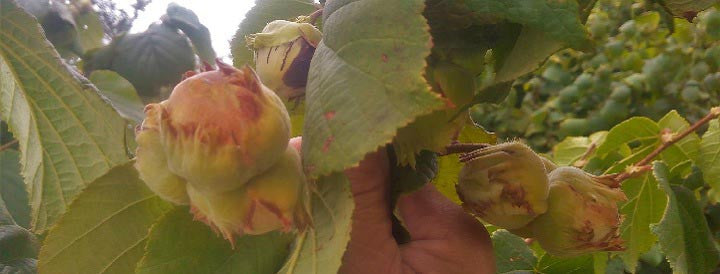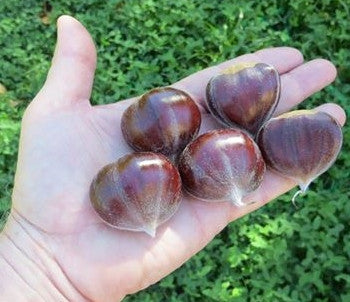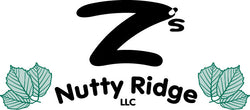WELCOME TO Z’S NUTTY RIDGE NURSERY - Your Native Nut Tree Store

We have been growing nut trees since 1993. We select the best nuts on the hardiest trees and cross breed for superior performance disease resistance and nut quality. We will propagate known cultivars of hazelnut and chestnut that meet our criteria and our own selections. We are located in the geographical center of New York State, in Cortland County, known as “Upstate New York”. We are USDA zone 5a at a very windy 1800 ft. elevation.
Almost 30 years ago we realized a large percentage of land was abandoned by farmers throughout the Northeast. The fields were getting filled with invasive bushes, sumacs, maples, and ashes. Taking natures lead, the search was on to find what trees could be planted to make the fields productive again.
After much research, we planted many thousands of nut trees of all types to learn what would grow in our colder USDA zones, on our hillside soils, and ample rainfall. It turns out the best nut trees were native to our region, just hybridized for disease resistance and large tasty bumper crops of nuts. During the multiple decades there have been many lessons learned on how to best grow nut trees and hybridize the best selections, so you can have your own tasty nut trees, without the wait!
We didn’t start from scratch as our research lead us to selections from other growers throughout the US and Canada. This allowed us to build upon the hybridization efforts of previous growers that can be traced back as far as 1921’. The one hundred years of efforts has resulted in nut trees that will enable cultivation from your back yard to all the fallow fields throughout much of North America.
Growing nut trees is easy once you know how! Take full advantage of our research and experience that spans three decades. We have boiled our knowledge down to an easy-to-read handbook for hazelnuts and chestnuts.
Hazelnuts
We currently sell seedling trees and are growing clonal orchards to sell layered hazelnuts of known quality. Seedling trees are nuts planted from a known good parent that is sprouted and grown one season in our greenhouse. Seedling trees won’t be identical to the parent but will often share similar characteristics. The seedlings are sold in the summer or are planted out for a second growing season and then sold. Layered selections are identical to the parent tree and are known as a “clone”. Layering has been done for thousands of years on any tree that will produce “suckers” or re-sprout after the tree has been cut down. The suckers or sprouts are encouraged to grow roots and then divided.
We have planted many thousands of trees from many nurseries that claimed that their trees were superior in some manner or characteristic that justified us buying them. The overwhelming majority of the trees we bought weren’t hardy, disease prone, or died. The trees that survived and thrived with good quality nuts we propagate or cross breed for further enhancements. Breeding of hybrid hazelnuts has been ongoing since 1921’.
Hazelnut trees are native to our region. The hazelnut hybrids are crosses of hardy native disease resistant hazels with the large tasty European hazelnuts. European hazelnuts aren’t disease resistant or very hardy. The goal that we and other have been striving for is a native type hazel tree with European sized nuts. This is why we say…
“Hazelnuts are a new crop over 100 years in the making.”
Chestnuts
We offer our own selection of Chinese chestnut that is very hardy and disease resistant we call ZCC and provide Missouri Horticulture and Agroforestry Research Farm (HARC) seedling trees. Missouri HARC chestnut orchard is an orchard of the best regionally adapted trees that can produce some of the best offspring for nut production for your home or orchard.
As you can see improving trees is a lifetime of effort. Annual grain and vegetable crops get two or three generations per year where nut trees take 4 to 7 years per generation and need testing for over ten years to validate the desired traits.
The information contained on this web site is general in nature to give a good overview of what is needed to grow a healthy tree. Please see specific references given for greater detail on a given subject and keep in mind that there may be some variations for your area.

Szego chestnuts

